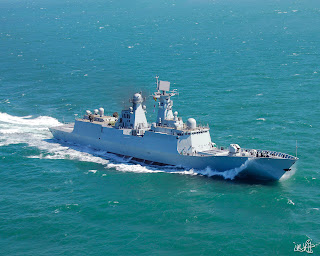TAIPEI, Taiwan, Sept. 30 (UPI)
The head of the air force said Taiwan's defense capabilities won't suffer despite the refusal of Washington to sell the island country F-16C/D fighters.
Instead of allowing the sale of new fighters to Taiwan, the United States has agreed to a major $5.9 billion upgrade program of the country's 145 General Dynamics F-16A/B Fighting Falcon jets.
An ongoing three-year upgrade program of 71 Indigenous Defensive Fighters will be complete late next year just as upgrading begins on Taiwan's F-16A/B fighters, Taiwanese air force Gen. Chang
Huey-zon said during a legislative session.
Upgrades to F-16A/Bs will be conducted on a gradual basis, with around 24 aircraft overhauled annually, a report a report by the national news agency CNA said. All the F-16 upgrades will be
completed by 2023.
"The decision was made to ensure a balanced military capability," Chang said.
Upgrades to another 56 IDF jets is set to be carried out from 2013-16 at a cost of around $530 million, Defense Minister Kao Hua-chu told a parliamentary committee.
"Besides making foreign arms purchases, we have to continue our efforts to advance military manufacturing technology," Kao said.
Kao said that by showing resolve to maintain self-defense capabilities Taiwan could persuade the United States to agree to the sale of more advanced weaponry in the future.
The ministry also plans to spend $2.63 billion on the acquisition of 50 training aircraft which could be designed and manufactured in Taiwan, although no firm decision has been taken, Kao said.
Development of the IDF -- also known as the AIDC F-CK-1 -- came about because of another refusal by the United States, that of selling Northrop F-20 Tigershark and also F-16 aircraft to Taipei in
the 1980s.
However, the sale of the F-16 aircraft went through in 1992, at the same time Taiwan ordered 60 Dassault Mirage 2000 fighters. The Taiwan government also already had committed to the IDF program.
Delivery of all F-16s was completed in 2001.
The IDF was designed and built by the Aerospace Industrial Development Corp. in Taichung, Taiwan, with assistance from U.S. defense corporations.
Airframe development was done in cooperation with General Dynamics.
Power plant and propulsion were designed with Garrett, now Honeywell.
Avionics came from Smiths Industries with some components purchased directly from Lear Astronics, Litton and Martin-Baker.
Maximum speed is around Mach 1.8 from two Honeywell F125-70 engines with a ceiling of 55,000 feet. Range is around 680 miles.
Taiwan remains the sole user of the IDF which first flew in 1989. The aircraft entered active service in 1994 and 130 had been manufactured by 1999.
While the refused sale of the F-16C/D aircraft was a disappointment to Taiwan, the announcement of the upgrade package to the older A/B variants was sternly denounced by Beijing.
"The wrongdoing by the U.S. side will inevitably undermine bilateral relations as well as exchanges and cooperation in military and security areas," China's Vice Foreign Minister Zhang Zhijun
said in a statement.
Zhang summoned U.S. Ambassador Gary Locke to Beijing to personally deliver the protest and warn of repercussions, the official Xinhua News Agency reported.
Zhang told Locke the proposed sale was a "wrong decision" that the Obama administration should "immediately cancel" before it produces "serious harm," Xinhua said.






.jpg)


 Comparison with Australia and Canada
(photo : Beehive)
Comparison with Australia and Canada
(photo : Beehive)

.jpg)




















